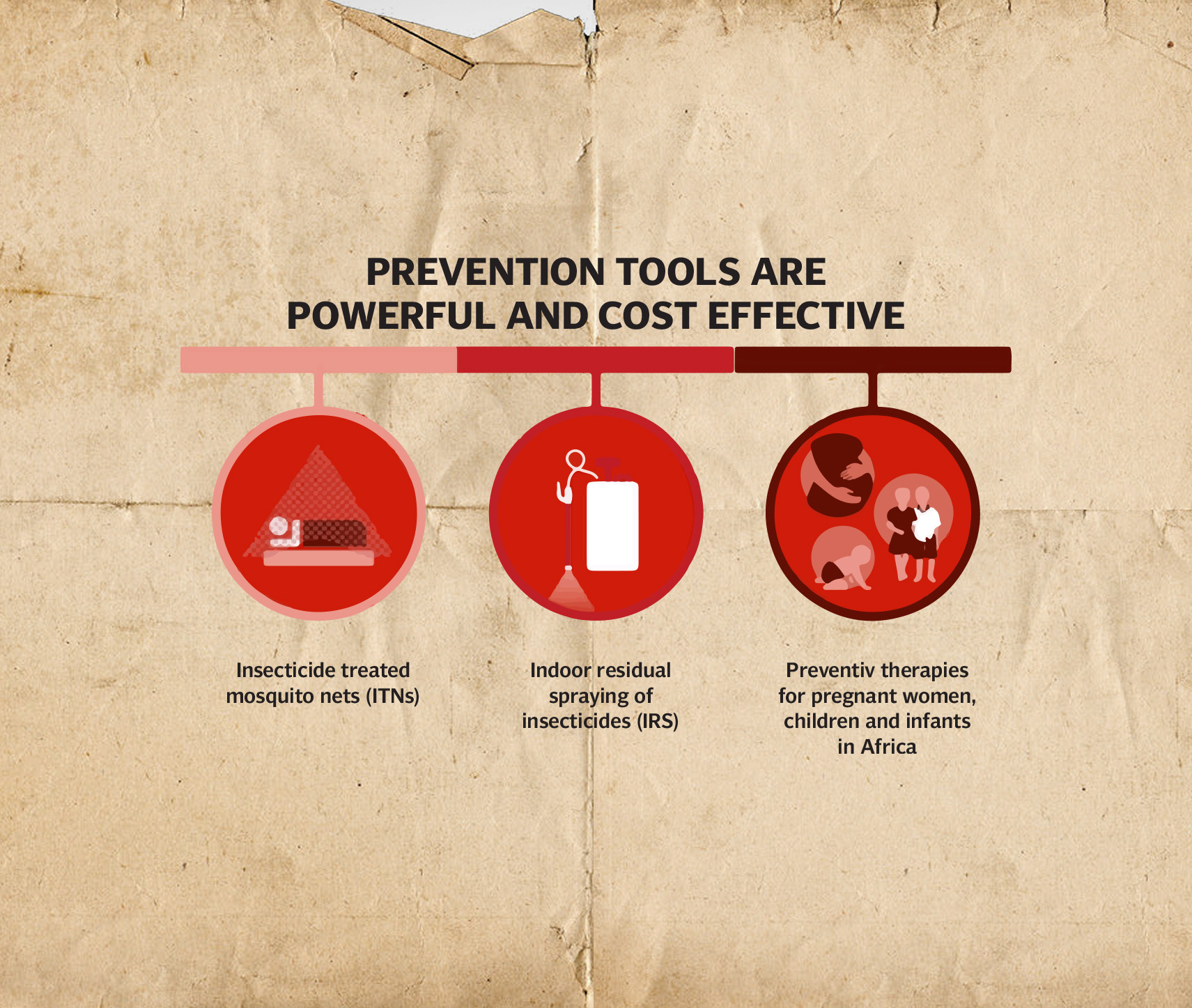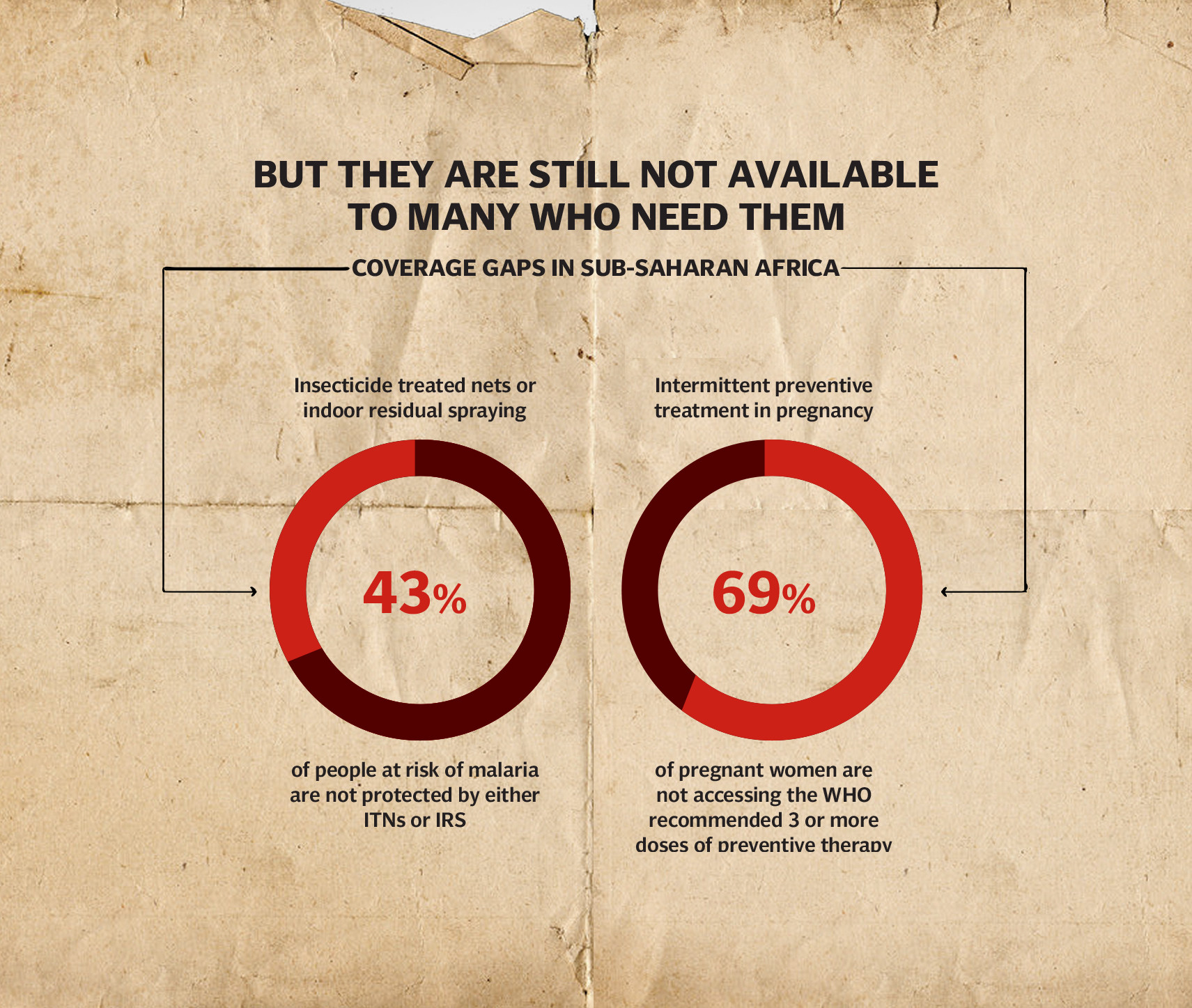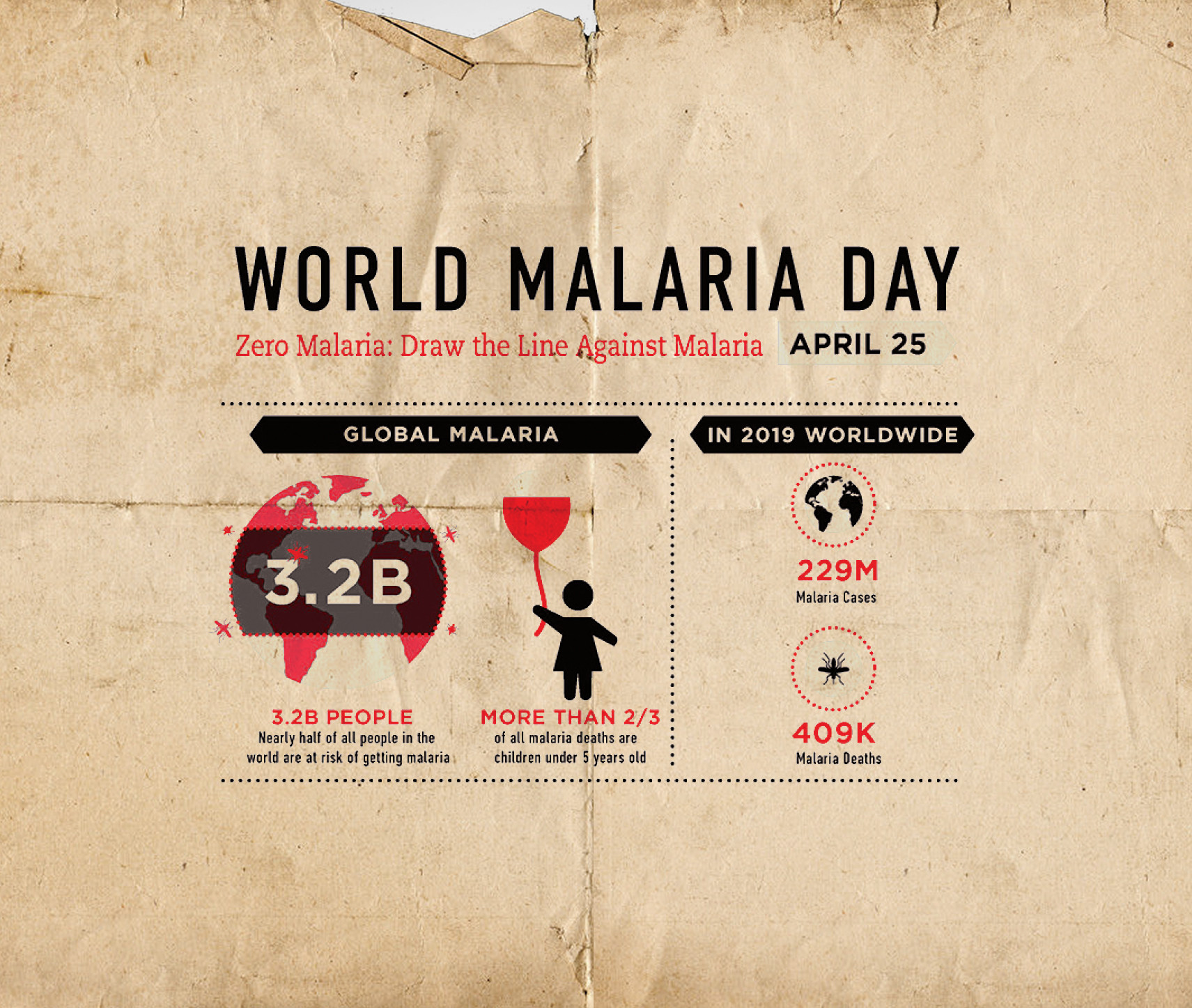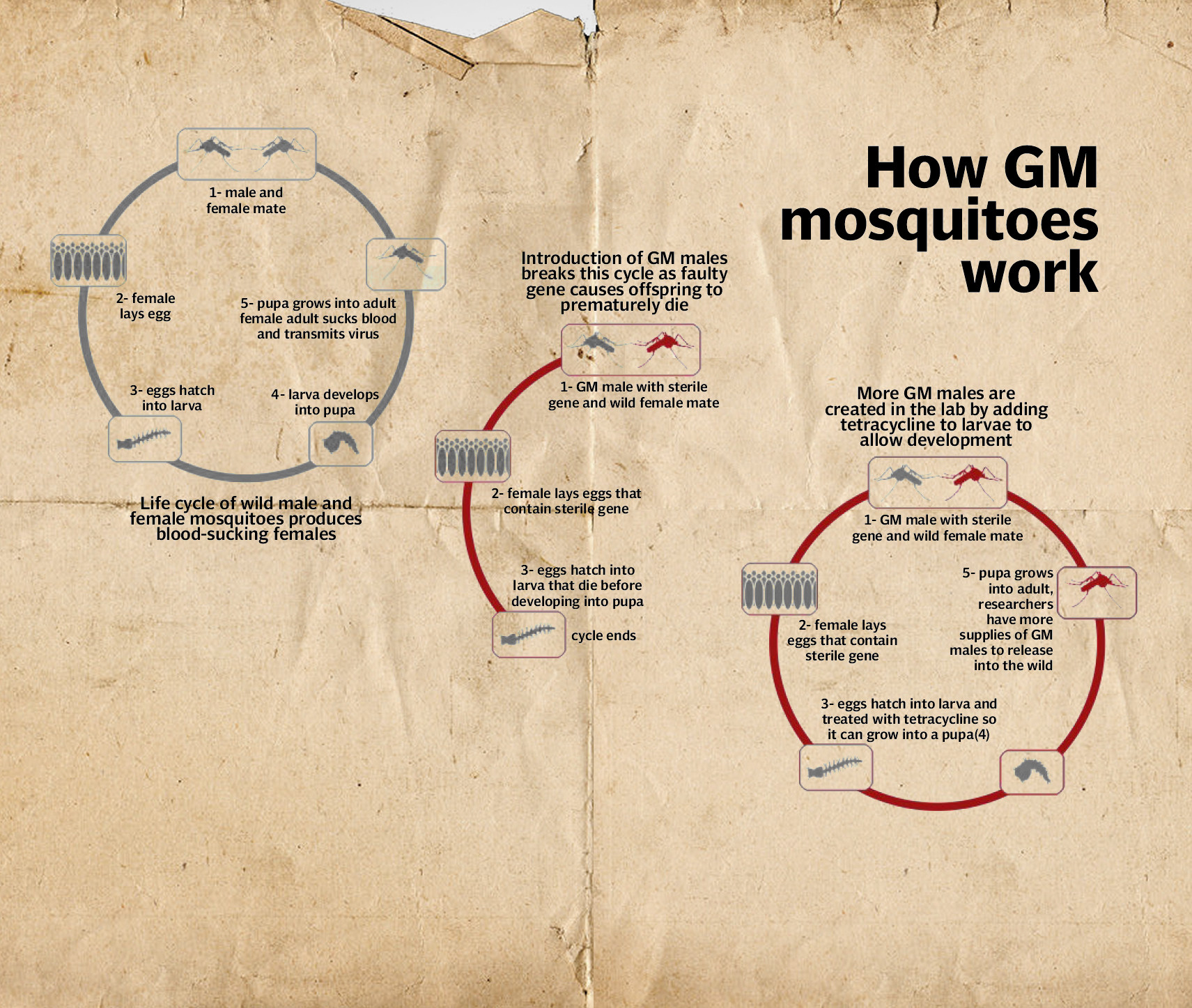A virus that dates back more than 2,500 years is still uncontrollable. The world has been trying to prevent it using different methods and technology but still hasn't had the hold of it. It is because of the nature and transmission process of the virus. The world every year on April 25, celebrates World Malaria Day every year to raise awareness among the people. This year World Health Organization (WHO) has marked the day under the theme "Harness innovation to reduce the malaria disease burden and save lives."
According to WHO, no single tool available today will solve the problem of Malaria. WHO wants nations to make investments and innovation to bring new vector control approaches, diagnostics, antimalarial medicines, and other tools to speed up progress against Malaria. With the help of all nations around the world, WHO has targeted to end Malaria in the world by 2030 under the WHO Global Malaria Strategy.
As per the WHO research, despite steady advances between 2000 and 2015 in lowering the global burden of Malaria , progress has slowed or stalled in recent years, particularly in high burden countries. WHO urges an urgent and concerted action to set the world back on a trajectory toward achieving the 2030 targets of the WHO Global Malaria Strategy.
Out of the world's malaria burden, approximately 70% is concentrated in just 11 countries – 10 in sub-Saharan Africa (Burkina Faso, Cameroon, the Democratic Republic of the Congo, Ghana, Mali, Mozambique, Niger, Nigeria, Uganda and the United Republic of Tanzania) and India. Internationally, approximately 1-3 million deaths per year are caused by this virus. Of these deaths, the 80-90% of the deaths each year are in rural sub-Saharan Africa and majority are in children aged five years or younger. It is the world's fourth leading cause of death in children younger than five years.
WHO response
The WHO Global technical strategy for Malaria 2016–2030, updated in 2021, provides a technical framework for all malaria-endemic countries. It is intended to guide and support regional and country programmes as they work towards malaria control and elimination.
The strategy sets ambitious but achievable global targets, including; reducing malaria case incidence by at least 90% by 2030, reducing malaria mortality rates by at least 90% by 2030, eliminating Malaria in at least 35 countries by 2030, and preventing a resurgence of Malaria in all malaria-free countries.
Guided by this strategy, the Global Malaria Programme coordinates the WHO's global efforts to control and eliminate Malaria by; setting, communicating and promoting the adoption of evidence-based norms, standards, policies, technical strategies and guidelines; keeping independent score of global progress; developing approaches for capacity building, systems strengthening, and surveillance; and identifying threats to malaria control and elimination as well as new areas for action.
Malaria in Pakistan

Pakistan is classified as a moderate malaria-endemic county, and it is one of the prevalent causes of death in all the districts of Pakistan. Malaria causes approximately 10,000 deaths every year in Pakistan. Notably, during the month from August to November, the post-monsoon is marked as the period of highest transmission. Two major vector species that transmit Plasmodium species (Plasmodium falciparum and Plasmodium vivax) are Anopheles culicifacies and Anopheles stephensi. Vixax is responsible for most malaria cases.
According to the latest statistics by the Directorate of Malaria Control (DoMC), the highest number of cases reported are from Balochistan (about 170,000), followed by Sindh (about 130,000) and the least number reported by Punjab (about 950 cases) during 2021.
Dr Hammad Habib, Advisor Malaria, DoMC, talks about the reason Balochistan is the most affected and Punjab, AJK, and GB the least affected because Malaria is known as a disease of underprivileged people and underdevelopment plays a role key role in its occurrence.
"GB due to cold weather and high altitude have lesser Malaria and Punjab due to more development and better economic indicators. Geographically Pakistan is divided into two halves, one has a high incidence of Malaria, and the other has a very low malaria incidence," he said.
Unpredictable transmission patterns
The significant factors contributing to outbreaks in the most affected provinces include unpredictable transmission patterns, climate change and global warming, weak immune system, health facilities and treatment compliance, and poor socioeconomic conditions.
Dr Umair Wahab, Deputy Director for Vector-Borne Disease at Directorate General Health Services Sindh, while explaining the major transmission factors, told The Express Tribune that the patterns of transmission are unpredictable in Pakistan.
"The mosquito is a very intelligent insect; it's been in the world for many centuries, and humans cannot control their patterns of transmitting the disease. It changes its pattern of biting and living. It can sustain everything and create resistance to drugs and DDT (spray). New technology is continuously being developed to contain the different patterns," he said.
He further said that another reason for the transmission is climate change. "Pakistan is affected by global warming, and climate change has caused heavy rainfall. Whenever there is water anywhere, the mosquitos can lay their eggs. They cannot lay eggs in running water, river, or sea. They look for puddles of water to lay their eggs, which can be in broken items, roads, open buckets, etc. Due to sudden rain and snowfall and a weak drainage system, the standing water makes the best place for the mosquitos to lay eggs. They can live as low as 16 degrees up to 26 degrees and reproduce fantastically," he added.
Weak immune system

In Pakistan, where a large portion of the population is living below the poverty line, the people's immune systems in underprivileged areas have become weak. There is no sanitation, a lack of fresh water and food, and stunted children. This causes a weak immune system, and if their immune is weak, the bite of malaria mosquito can hit them severely as they have little resistance to fight back against Malaria. Also, as the densely populated are the ones with a weak immune system, the transmission of malaria increases as the mosquito can bite several people in the same area.
Although the health care system in Pakistan, especially in the rural areas, is not equipped with primary health facilities, in the case of Malaria, it is not about the health facilities but the treatment compliance. Wahab informs that most of the district healthcare centres have treatment kits, drugs, medications, and testing kits, but the return rate of the patient after the first treatment is meagre.
"The National Health Ministry has provided all the equipment and medications to the province who further distribute it to the districts and then reach the clinics and hospital. All of the medication and tests are free of cost. It is compulsory to test for Malaria in any patient who comes with a fever. If tested positive, proper medication is provided. But as the course of Malaria lasts for six months, the patients don't return after their fever comes down," he said.
He added that people don't understand that the malaria parasite is still in the liver from six months to one year. "If not fully treated, it can come back after some months and can be reactivated, and if during that time a mosquito bites the infected person, it can transmit to others. So there is the need to understand that one has to get the complete course of Malaria to get disinfected completely," he said.
Interventions to fight Malaria
Pakistan is one of the countries that have signed the Sustainable Development Goals (SGD) of eliminating Malaria by 2030. Pakistan has set a target to reduce it by 75% and is making efforts to achieve it.
In most malaria-endemic countries, including Pakistan, four interventions—case management (diagnosis and treatment), ITNs or LLINs, IRS, and IPTp—make up the essential package of malaria interventions. In contrast, other occasionally used interventions include; larval control and other vector control interventions, mass drug administration, and mass fever treatment.
As World Malaria Day arrives, Pakistan is going through a month-long activity for health awareness sessions as part of its case management intervention. The capacity building of medics for compliance and treatment of Malaria. For properly executing the prevention and control measures in Pakistan's high burden disease districts.
Global Fund also supports Pakistan, an international NGO supporting Pakistan in fighting against Malaria, AIDS and TB to reduce the burden of diseases in Pakistan. Pakistan's overall Annual Parasite Index (API) is around 9 to 10, which denotes the burden and severity of the disease in Pakistan, and it should be below ten, and Pakistan is near the borderline.

Vector Control is one of WHO's strategies for the prevention of Malaria, and it is a vital component of malaria control and elimination strategies as it is highly effective in preventing infection and reducing disease transmission. The two core interventions are insecticide-treated nets (ITNs) and indoor residual spraying (IRS).
The DoMC, with the help of The Global Fund, has started a mass campaign in the FATA area to distribute Insecticide-treated nets (ITNs) or Long-lasting insecticidal nets (LLINs). These are specially designed bed nets with insecticides (pesticides formulated to kill, harm, repel or mitigate one or more insect species) over it. These have played an essential role in the remarkable success of reducing the malaria burden over the past decade. They are a core prevention tool and are widely used by people at risk of Malaria.
"There is a mass distribution in the high burden areas so that they can sleep without being infected. Along with FATA, the distribution is also being carried out in districts of Sindh, Balochistan, and KPK to reduce the burden," informed Wahab.
Many malaria vectors are considered "endophilic"; the mosquito vectors rest inside houses after taking a blood meal. These mosquitoes are particularly susceptible to control through indoor residual spraying (IRS).
IRS is the most common type of intervention used in Pakistan. The provincial team of DoMC carries out the drive that involves coating the walls and other surfaces of a house with a residual insecticide. For several months, the insecticide will kill mosquitoes and other insects that contact these surfaces.
IRS does not directly prevent people from being bitten by mosquitoes. Instead, it usually kills mosquitoes after they have fed if they come to rest on the sprayed surface. IRS thus prevents transmission of infection to other persons.
Fogging is used to kill all types of insects to reduce the transmission of the disease. The local government carries a drive during the high (August to November) and low (March to April) transmission season. In fogging, petrol is used to kill the mosquito, not just malaria-carrying mosquitoes but all types of insects, which is different from what the health department is doing.

"All the steps and intervention taken by the health department is to prevent the Malaria and not kill mosquitoes. Malaria is only caused by the female anopheles mosquito, whereas the Culex mosquito cannot transmit Malaria," informed Wahab.
He also informed that during the high transmission season, the health authorities disseminate the SOP to control Malaria by sweeping operations at the graveyards, nurseries, or wherever there is water. "These mosquitoes need a pond of water, and they can lay their eggs. A mug of water can easily reproduce, and the mother can lay eggs," he said.
For this, there is an intervention called 'Larviciding'. It is a type of insecticide used to control mosquitoes indoors and outdoors. They work by killing mosquito larvae before they can grow into adults. Some formulations are activated when ingested by the mosquitoes, and some formulations work when they come into contact with the larvae is also an intervention it is harmless to people.
It comes in different forms, including liquids, tablets, bits, pellets, granules, and briquettes. People can use it in the areas where mosquitoes lay eggs to help reduce the number of mosquitoes in an area. Mosquitoes lay eggs in items that hold water like; buckets and rain barrels, fountains, gutters or downspouts, non-chlorinated swimming pools, pool covers that collect water, tires, tree holes, or broken items.
Preventive Chemotherapies
The other strategy that WHO is using is Preventive Chemotherapies. It is the use of medicines, either alone or in combination, to prevent malaria infections and their consequences. It includes chemoprophylaxis, intermittent preventive treatment of infants (IPTi) and pregnant women (IPTp), seasonal malaria chemoprevention (SMC), and mass drug administration (MDA). These safe and cost-effective strategies are intended to complement ongoing malaria control activities, including vector control measures, prompt diagnosis of suspected Malaria, and treatment of confirmed cases with antimalarial medicines.
For Pakistan, these measures don't suit. Wahab informed that the doctors prescribe drugs prophylactically means before malaria infection to the people who are visiting high burden malaria districts or who are healthy so that they don't get infected with Malaria.
"We are using preventive or prophylactic treatments in practice. These are all mandatory guidelines, but again it depends on the behaviour and compliance of the community. So, we are not up to the mark with all the chemoprophylaxis mentioned above. We need improvements like social awareness," he said.
Whereas Habib informed that these are mainly used in African countries as they are expensive and focused on falciparum malaria. "In Pakistan, our main burden (approx 75 to 80 per cent) is vivax malaria, for which other measures are recommended," he said.
Vaccine

Since October 2021, WHO also recommended the broad use of the RTS, S/AS01 malaria vaccine among children living in regions with moderate to high P. falciparum malaria transmission, the vaccine has shown to significantly reduce Malaria, and deadly severe Malaria, among young children.
In Pakistan, to date, no vaccine is being used. It is because the strategy that Pakistan is currently using doesn't include the use of vaccines. "Our strategy is not yet targeting malaria vaccine because it is too expensive and we have to vaccinate whole population or high-risk groups but do not have sufficient funds," said Habib. "Malaria vaccination is quite recent, and new innovative intervention and will require some years more with huge resources to trickle to Pakistan."
Silver lining
According to the stats, the condition in Pakistan is far better than that of African countries. Being an endemic region and if not supported by Global Fund, Pakistan can face severe issues. "The API was high in Pakistan due to constant intervention, surveillance monitoring, case management technique, new drugs, and treatment compliance. We have to reduce the number of cases to less than 75% by 2030," said Wahab.
"Drug Artemether is the new technology used in Pakistan. A drug called Mefloquine is also in the pipeline, which will be available to use in the coming years," he said.
He concluded by saying that the public must be aware of all the steps taken to prevent Malaria and help the authorities fight against Malaria. "The government runs awareness campaigns for extracting the standing water anywhere near your house. If we continue doing this, we will be able to end Malaria in Pakistan by 2030," he said.
